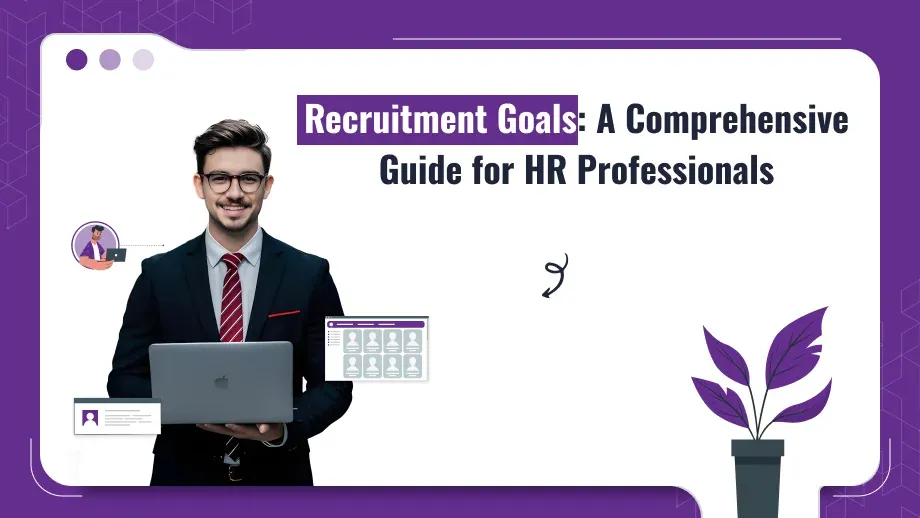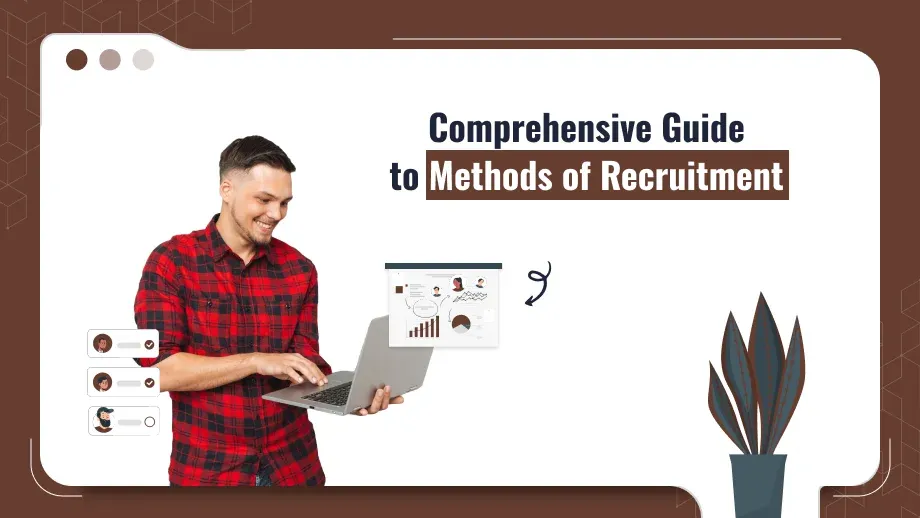
Core recruitment is a vital element in talent acquisition. It’s not just about filling gaps in the company. Instead, it involves strategic planning to drive consideration of very core business needs and match the right people to the right place. We know and respect that effective recruitment can indeed make or break an organization’s success. The following report covers the basics of core recruitment, insights, best practices, and strategies to optimize your recruitment process.
What is Core Recruitment?
Put in the most basic way, recruitment refers to all those organized processes and strategies by which the right people are evaluated and recruited within an organization for fitting purposes. It requires a clear understanding of the need for a job as well as careful sourcing; therefore, a systematic selection process. In contrast, while project-based or temporary staffing, recruitment focuses more on creating the appropriate long-term pipeline of talent through which businesses can develop and stabilize.
With the competitive nature of today’s job market, stakes are higher than ever. Being an organization that relies on talent to make performance happen, luck and serendipitous approaches to hiring cannot remain the only strategy employed. Instead, a sound approach will attract the best talent and minimize the risks of a costly poor hire for both bottom-line financials and intangible team morale reasons.
Core Resource Recruitment Components
Job Requirements
Job requirements lay the foundation for effectiveness and essentially involve working with hiring managers to clarify the needs for each role in terms of their skills, qualifications, and experiences. This way, HR professionals get insight into the specific needs of each role and can write job descriptions that resonate with potential candidates.
Job Descriptions
A clear and concise, engaging well-written job description is one of the most potent tools in your core recruitment arsenal. Your existing policies should be laid out to illustrate key responsibilities, qualities, and organizational culture. The language used should be jargon-free and comprehensive enough to attract a diverse pool of candidates. The job description marks the first impression your organization makes so be true to its word!
Sourcing
Sourcing candidates is the backbone of successful core recruitment. Utilize job boards, social media, employee referrals, and networking events. Different sourcing methods have their pros and cons, so the more channels you put out there, the higher your chance of reaching quality candidates.
Consider using technology, such as an resource, in your sourcing efforts. It will help you manage the applications much more efficiently so you are not getting bogged down in administrative tasks and you can focus your time on developing relationships with candidates.
Screening and Selection
After attracting candidates, the next step is screening and selection: reviewing resumes, phone interviews, and evaluating candidates through a range of mechanisms – it could be skills assessments or personality tests. Pay attention to building a process for interviews that becomes fairly consistent so you can judge candidates appropriately.
Effective screening indeed identifies the best candidates for further interviews; however, it also leaves a good taste in the mouths of candidates. Remember candidates are also assessing your organization as much as you are assessing them.
Diverse Candidate Pool
Diversity is the way to innovation and growth. Varied employees bring different views and ideas, along with a homogeneous environment. To achieve this, make sure that your recruitment strategies are designed to attract diverse candidates. To do that, you might choose to target particular job boards, community organizations, or professional groups that target underrepresented populations.
Looking for talent but having trouble finding it?
Streamline your core recruitment process and ensure you hire top candidates efficiently.
Candidate Experience
Candidate experience is the most integral part of core resource recruitment. From the time a candidate applies for a role till the last stages of onboarding, every interaction matters. Seamless, respectful, and engaging recruitment processes are likely to positively reflect your organization. It will not only enhance your employer brand but encourage candidates to spread the word about their experience.
Employee Referrals
Employee referral is one of the most effective sourcing tools. Often, referrals from current employees bring in high-quality talent as well as fit the organizational culture. Develop a formal employee referral program and incentivize and motivate more employees to refer in efforts to boost higher quality hires and decrease time-to-fill.
Assessments for Fit
You would then ensure the recruitment process includes such assessments to acquire the right fit for the job, as well as organizational values. Cognitive ability tests or situational judgment tests would tell you much about how a candidate would probably perform and fit into the organizational culture. These tools help you make the selection with more information than just resumes and interviews.
Employer Branding
A good recruitment strategy is complete with a strong employer brand. Your brand should mirror your organization’s values, mission, and culture. You may see branding reflected in your job descriptions, website, and other social media. Candidates are increasingly considering an employer’s culture when determining a good fit, so a compelling brand can help bring high-quality talent to your doorstep. Utilizing an AI logo generator can ensure your branding remains visually appealing and consistent across all platforms.
Talent Pool Management
Managing your talent pool is key to core resource recruitment. Develop a system to track candidates who may not be right for the current role but could be for future ones. Engage with this pool regularly to keep relationships alive, share company updates, and keep candidates informed of upcoming opportunities. This proactive approach creates a talent pipeline for future employee hiring process needs.
The Role of Technology in Core Recruitment
Technology has already transformed the recruitment landscape, and the right tool is the key to optimizing your core recruitment. Virtual recruiters and AI-driven solutions help provide a smooth flow of some mundane processes to help your core hr recruitment team focus on the real strategic parts of the process, e.g., screening CVs, scheduling interviews, and even giving instant feedback to candidates.
This Best HR software for recruitment shall inform you about recruitment metrics for easy monitoring of performance and data-driven decision-making. Analyzing your recruitment data will help you identify a trend, see the best candidates coming from which sourcing channels, and refine your processes to improve results.
With candidate relationship management (CRM) systems, you can also create relationships with candidates who won’t be selected for this particular role. It is a long-term engagement, building pools of talent for the future and, at the same time, improving your employer’s brand.
Best Practices for Core Recruitment
Building a Strong Employer Brand
Attract the best talent with a strong employer brand with more time spent on company culture, values, and experiences of employees. Using social media and the company website for real stories shared by current employees; candidates are in a better position to apply if connected to your brand.
Engaging Candidates
Involving the candidate through the whole process, clear communication on time, timely feedback, with a great interview experience, is a memory to last, and candidates who feel valued and respected are more likely to accept a job offer and refer others to your company.
Using Employee Feedback Management
Implement employee feedback management systems and learn the satisfaction and engagement levels. Carry out this process by asking the current employees about their recruitment experience and overall job satisfaction regularly, thereby detecting areas of improvement and changing them accordingly.
Feedback in Real-Time
Giving feedback real-time shall work wonders for your recruitment of core resources. Feedback from the candidate at each stage of the hiring process shall help you find what to improve and fix. This way, you do not only improve the candidate experience but also the recruitment brand.
Training Hiring Managers
Hiring managers are the most critical players in the hiring process. Invest in training hiring managers on interviewing techniques, awareness of bias, and candidate engagement, and you’re likely to get better hiring outcomes. Empower your hiring managers to be involved more extensively in your process and you will get more collaboration and team cohesion.
Onboarding for Success
Once a candidate is recruited, onboarding is key to keeping them. It involves making sure that new joiners have a structured onboarding program so that they are welcomed and readied for their role, which most of the time includes resources necessary to complete a task, orientation sessions, and even assignments with a mentor to guide them in making the transition.
Analyse Recruitment Data
The key to understanding core resource recruitment strategies is to use data analytics. Track your core recruitment metrics, and adjust your strategy based on the findings. For instance, if there is a high drop-off at one of the stages during an interview, then it could be that the process is not as interesting or that candidates are confused about what to expect.
Positive Work Environment
An attraction to and retention of talent in a company revolves around its work environment. Building a collaborative, diverse, and inclusive workplace culture is sure to boost the employer brand and deliver employee satisfaction. A prospective candidate looks for a company that relates to him or her personally as an organization of values, a friendly environment, and so on.
Clear Communication Channels
Open communication is key for both candidates and internal stakeholders. Ensure candidates get updates on their application status and feedback after interviews. Internally clear communication between HR, hiring managers, and executives will help collaboration and streamline the recruitment process.
Metrics and Analytics in Core Recruitment
Tracking metrics and data is key to measuring your core resource recruitment success. Key performance indicators (KPIs) to monitor:
- Time-to-fill: Time taken to fill a role when live. A shorter time-to-fill means a more efficient process.
- Quality of hire: How new hires perform over time. This helps you know if your recruitment process is selecting candidates who excel in their roles.
- Candidate satisfaction: Get feedback from candidates on their recruitment experience and you’ll get valuable insights into areas to improve.
- Offer acceptance rate: Monitor the percentage of job offers accepted by candidates. A low acceptance rate may mean issues with compensation, benefits, or candidate experience.
- Retention rates: How many new joiners stay with the company after a certain period will help you measure the long-term success of your core recruitment strategy.
Summary
Core recruitment is the foundation of your talent acquisition. By planning, sourcing, and improving candidate experience you’ll build a solid base to attract and retain the best. Use technology, data, and a strong employer brand to do more.





